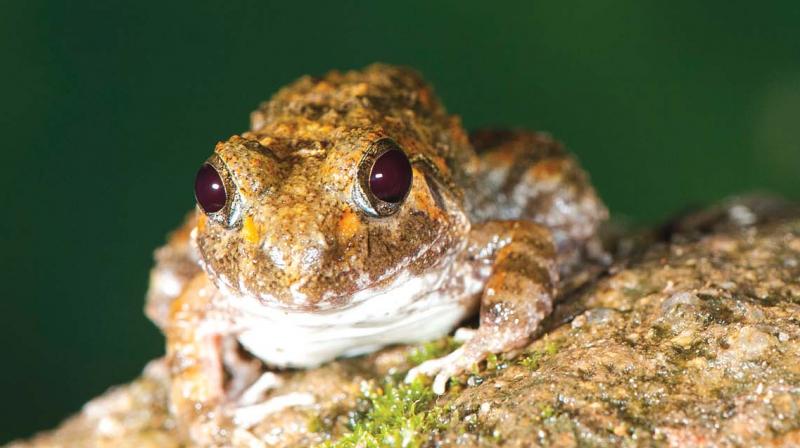Stunning discovery on frog species
Single' species of burrowing frog identified as five different species.

KOCHI: What has been till now considered as a single species of burrowing frog endemic to Western Ghats has been identified as five different species. The path-breaking discovery will prompt a thorough reassessment of, or even radically alter, the conservation status of the species that is thought to be widely distributed throughout Western Ghats. The status of the four newly-discovered species too is a matter of concern. A fairly large colony of frogs, as it turned out, was in reality five fast dwindling frog tribes.
The discovery is the result of five years of extensive explorations in the Western Ghats by Sonali Garg, a PhD student from the University of Delhi. “Our study highlights a fairly common group of frogs that is usually found closer to human habitations, but is still not documented properly. More extensive studies are required to scientifically identify and describe the Western Ghats frogs which are already facing extinction threats from various human activities,” said Sonali Garg, who did her research under Dr S.D. Biju, well-known amphibian biologist and professor, Department of Environmental Studies, University of Delhi.
Previously, only one species of burrowing frog (Fejervarya rufescens, commonly known as Rufescent Burrowing Frog) was known in the genus. This single species, since it was seen throughout Western Ghats, was therefore given a ‘Least Concern’ conservation status. However, the new study has revealed that the distribution of this species is restricted to a much smaller region, Karnataka and adjoining parts of Kerala. The others, which looked so similar that their differences had eluded the herpetologist’s eye for so long, represented four different species. The newly-sampled frogs were confirmed as four different species by using an integrated taxonomic approach that included DNA studies, detailed morphological comparisons and bioacoustics.
The newly-discovered frogs are: Manoharan’s Burrowing Frog (discovered from Agasthyamala hills, and named after former head of forest force T.M. Manoharan), Kadar Burrowing Frog (discovered from Vazachal forest and named after the Kadar tribe in the region), CEPF Burrowing Frog (discovered from the popular hillstation Amboli in Maharashtra, and named after Critical Ecosystem Partnership Fund (USA), and Neil Cox’s Burrowing Frog (discovered in Parambikulam Tiger Reserve, and named after Dr Neil Cox of the International Union for Conservation of Nature.)
The number of amphibian species known from the Western Ghats has nearly doubled within a short span of ten years, making it one of the leading biodiversity hotspots in the world with an unprecedented rate of new frog discoveries. However, over 32 percent, that is one-third of the Western Ghats frogs, are already threatened with extinction. Out of the four new species discovered by Delhi University researchers, two (Kadar Burrowing Frog and CEPF Burrowing Frog) could be facing serious anthropogenic threats requiring immediate conservation attention.

